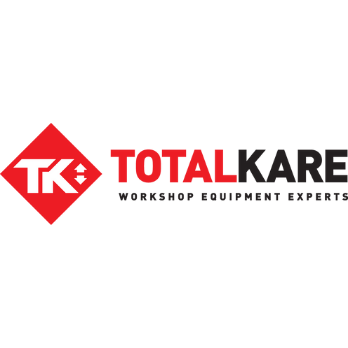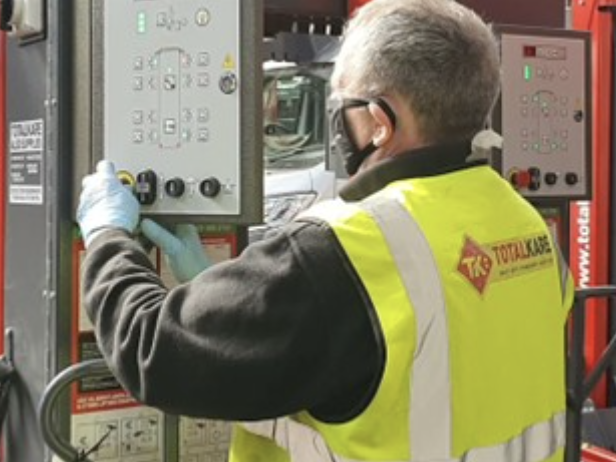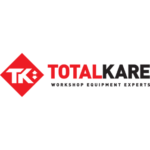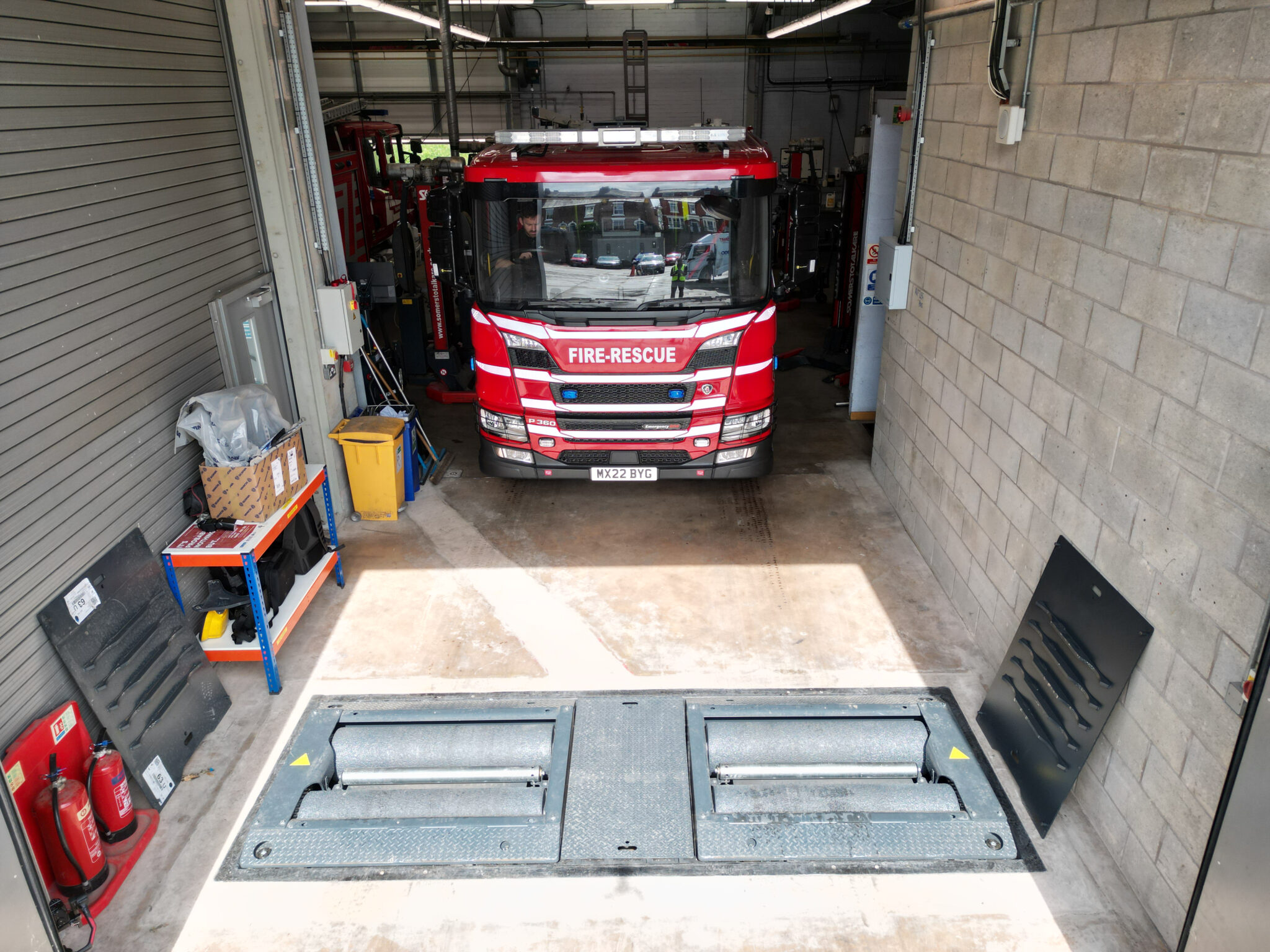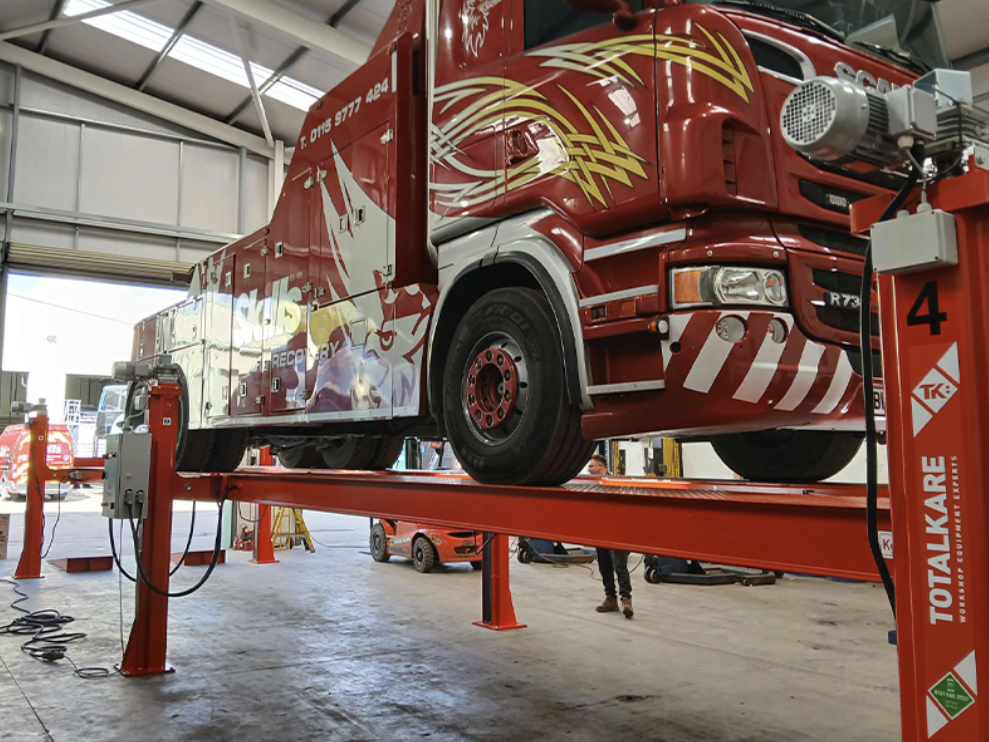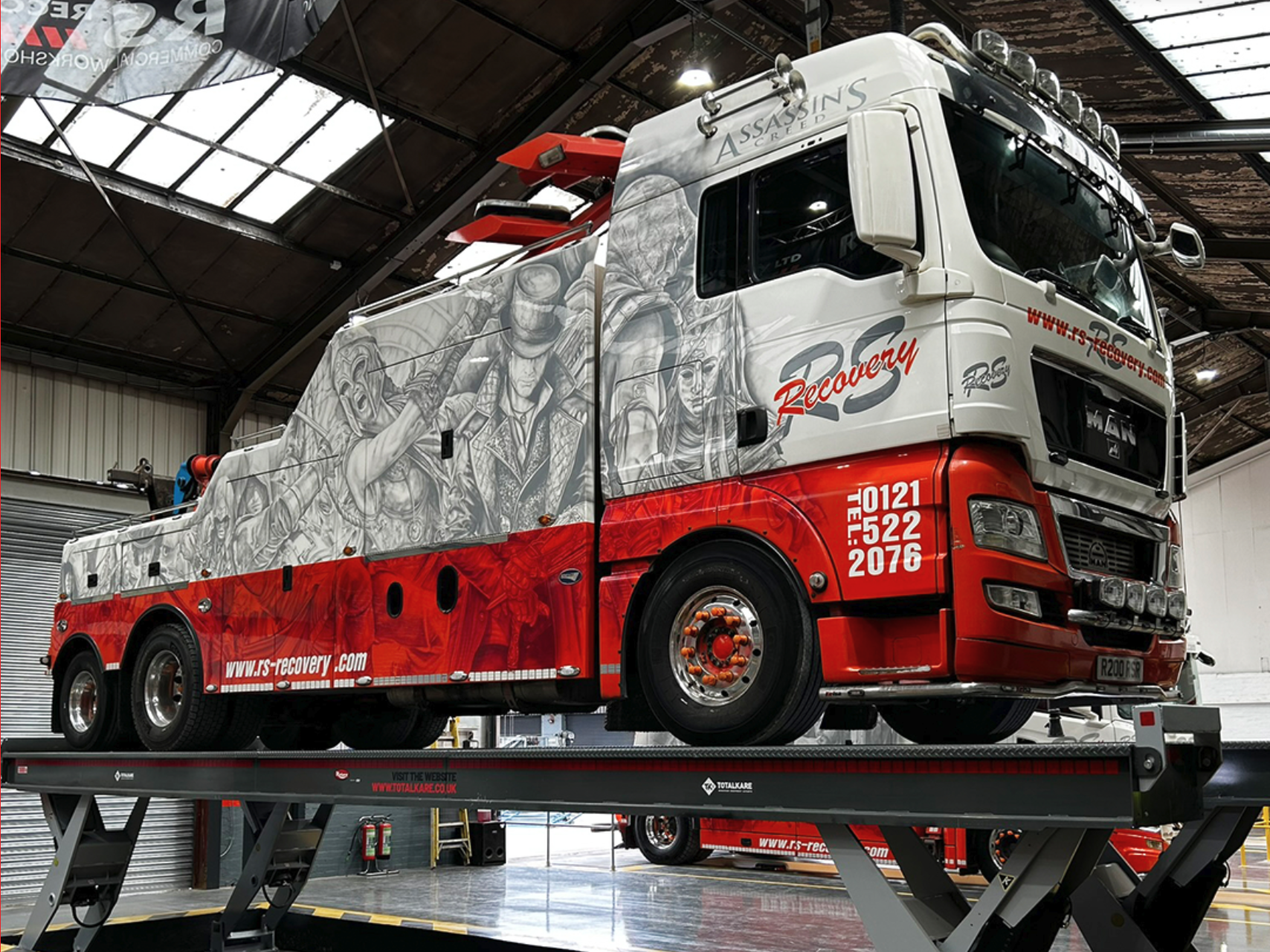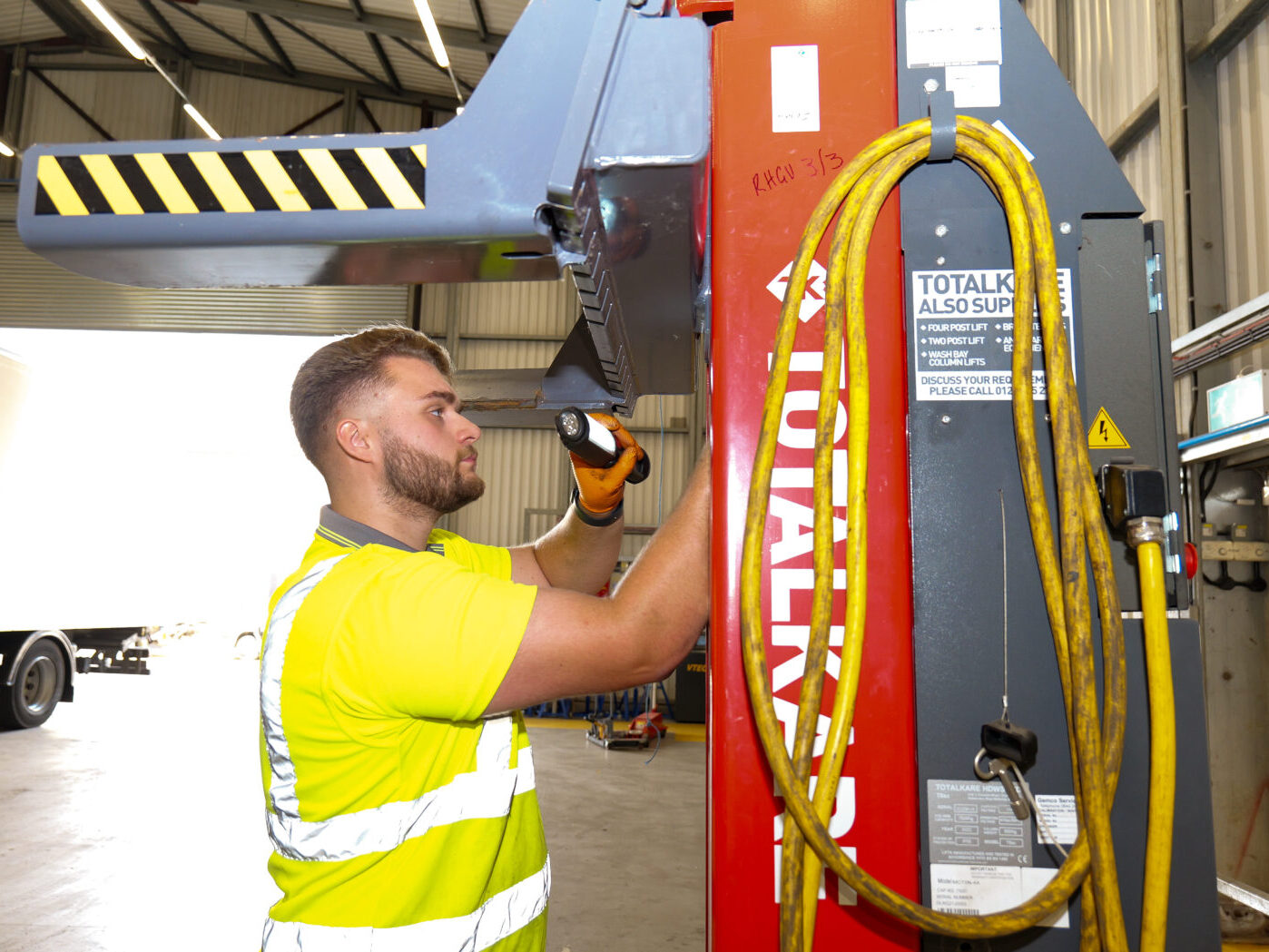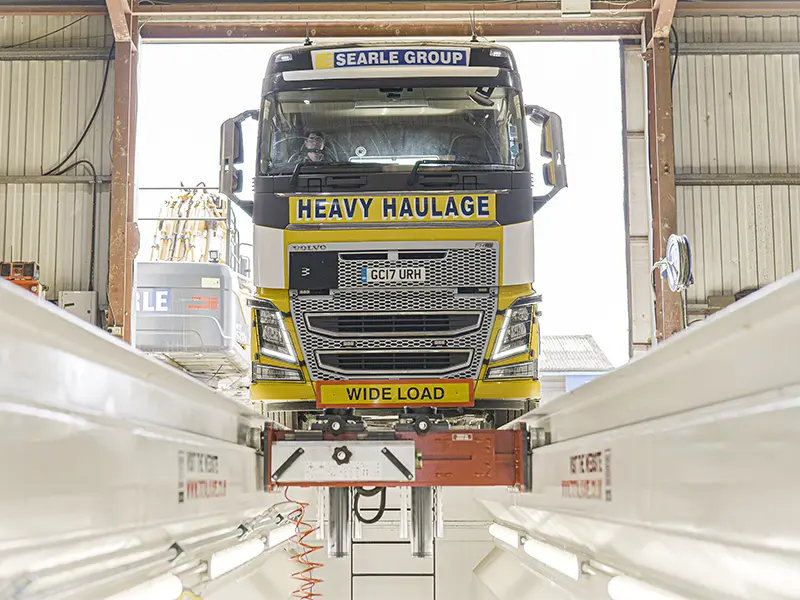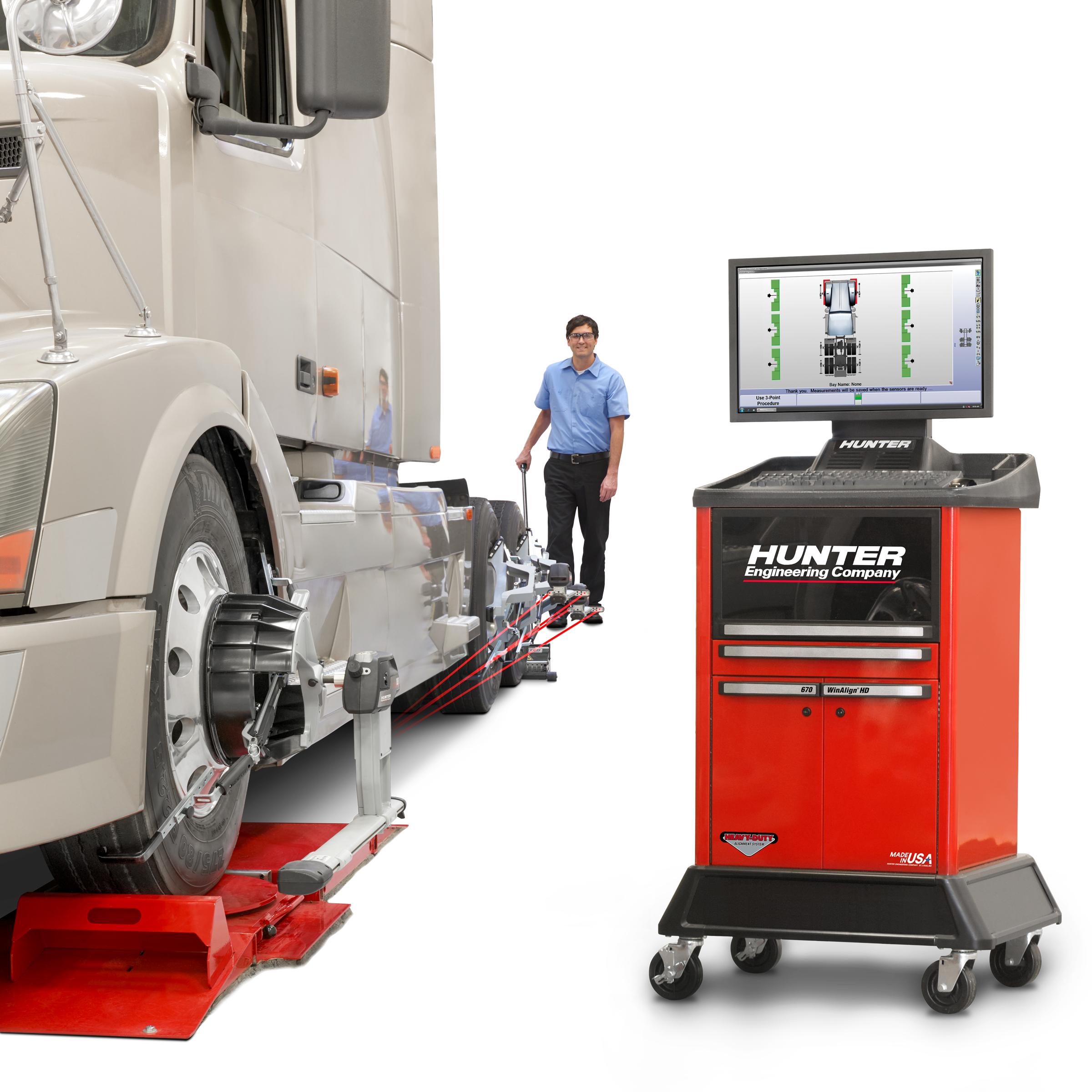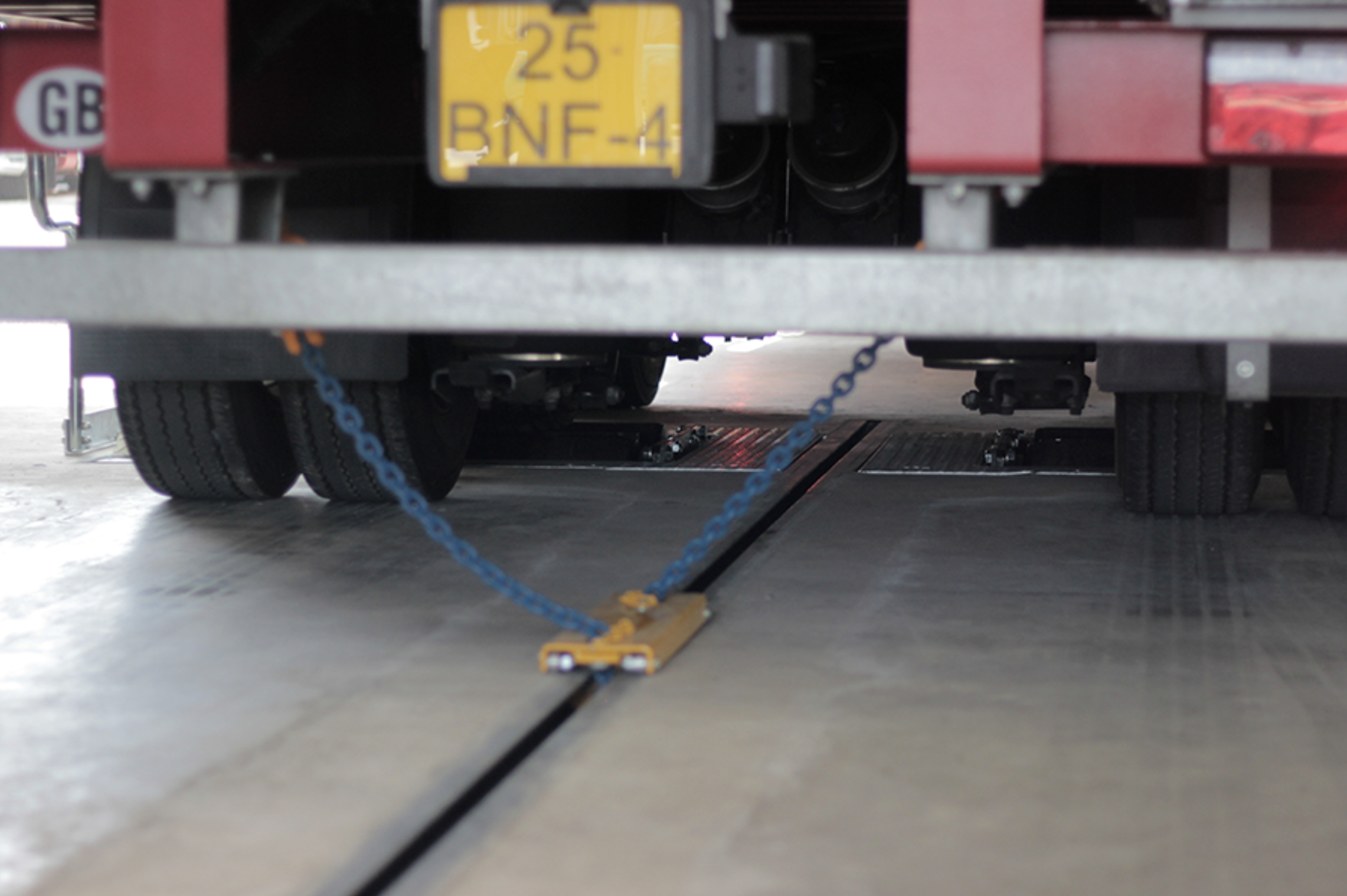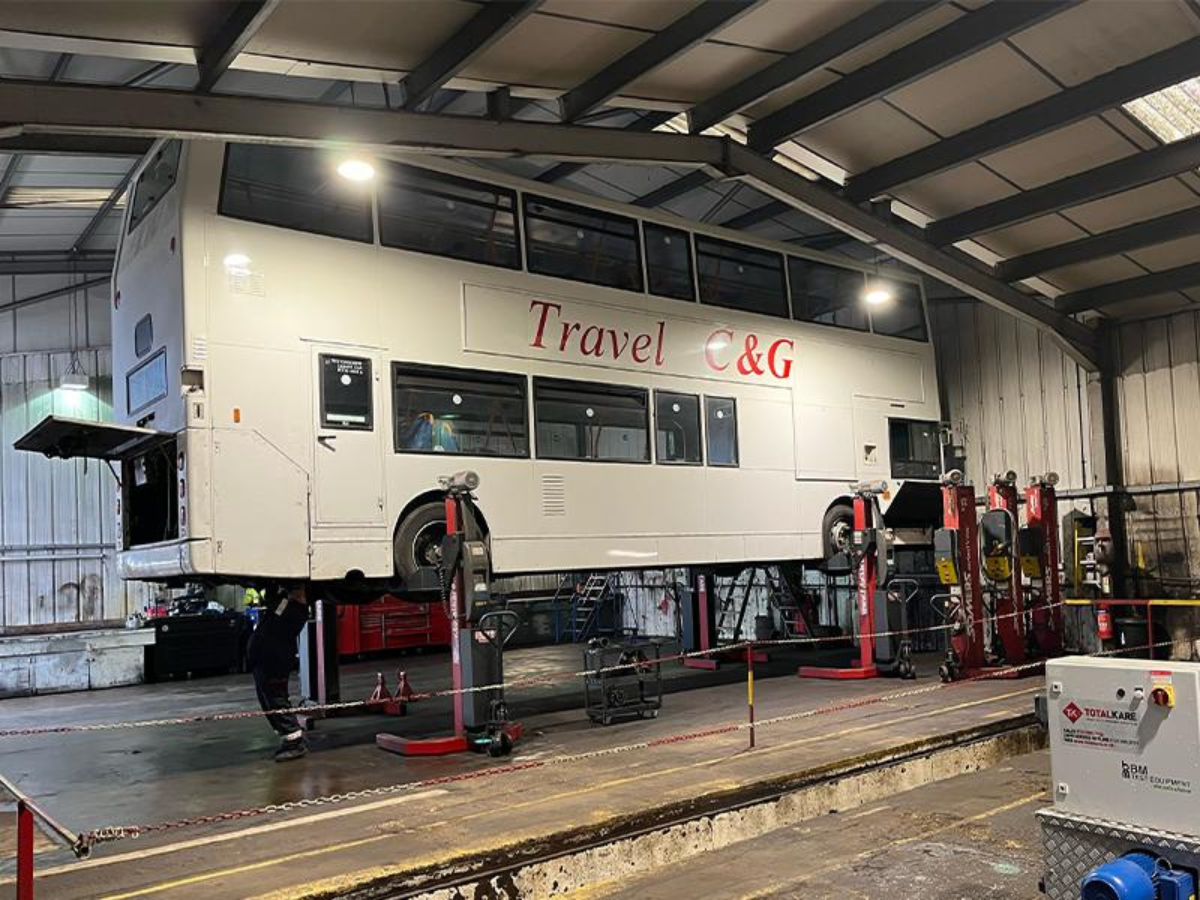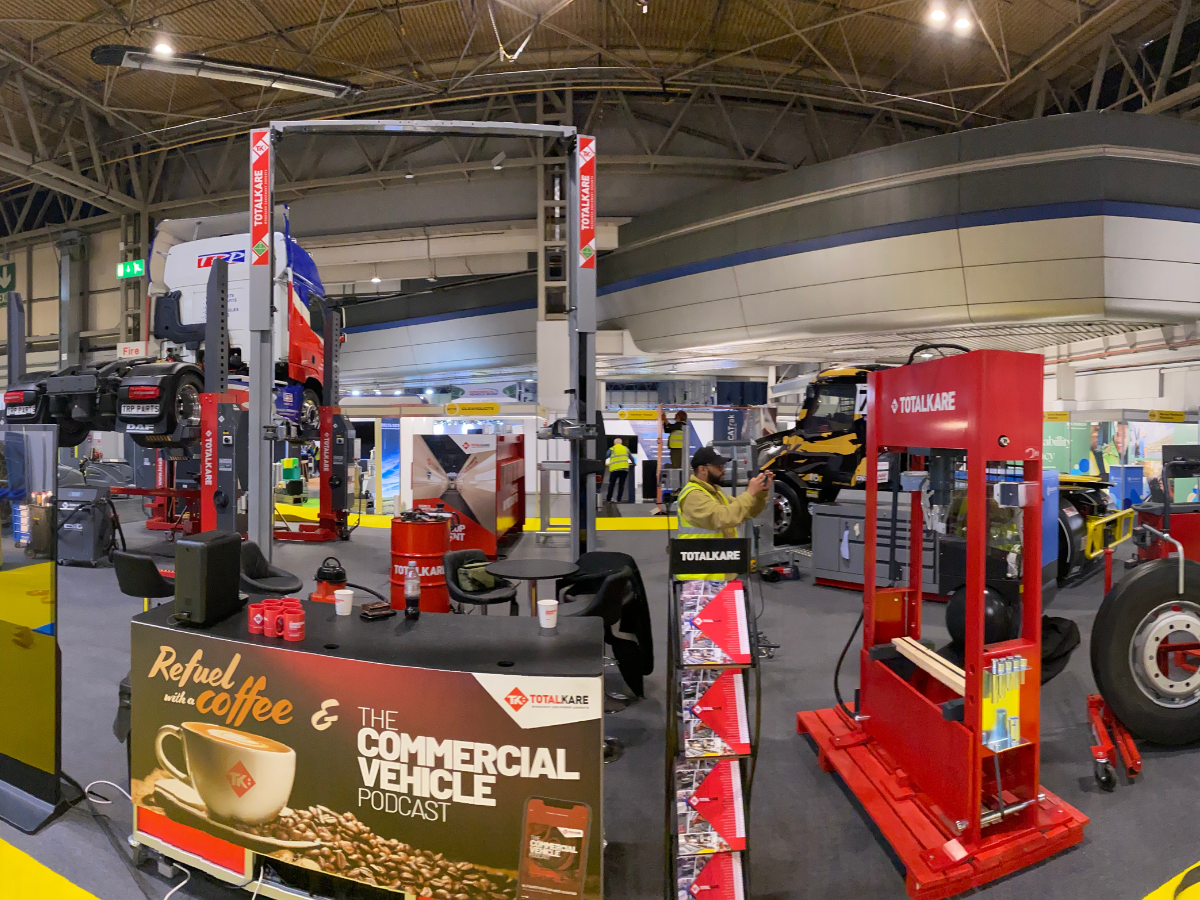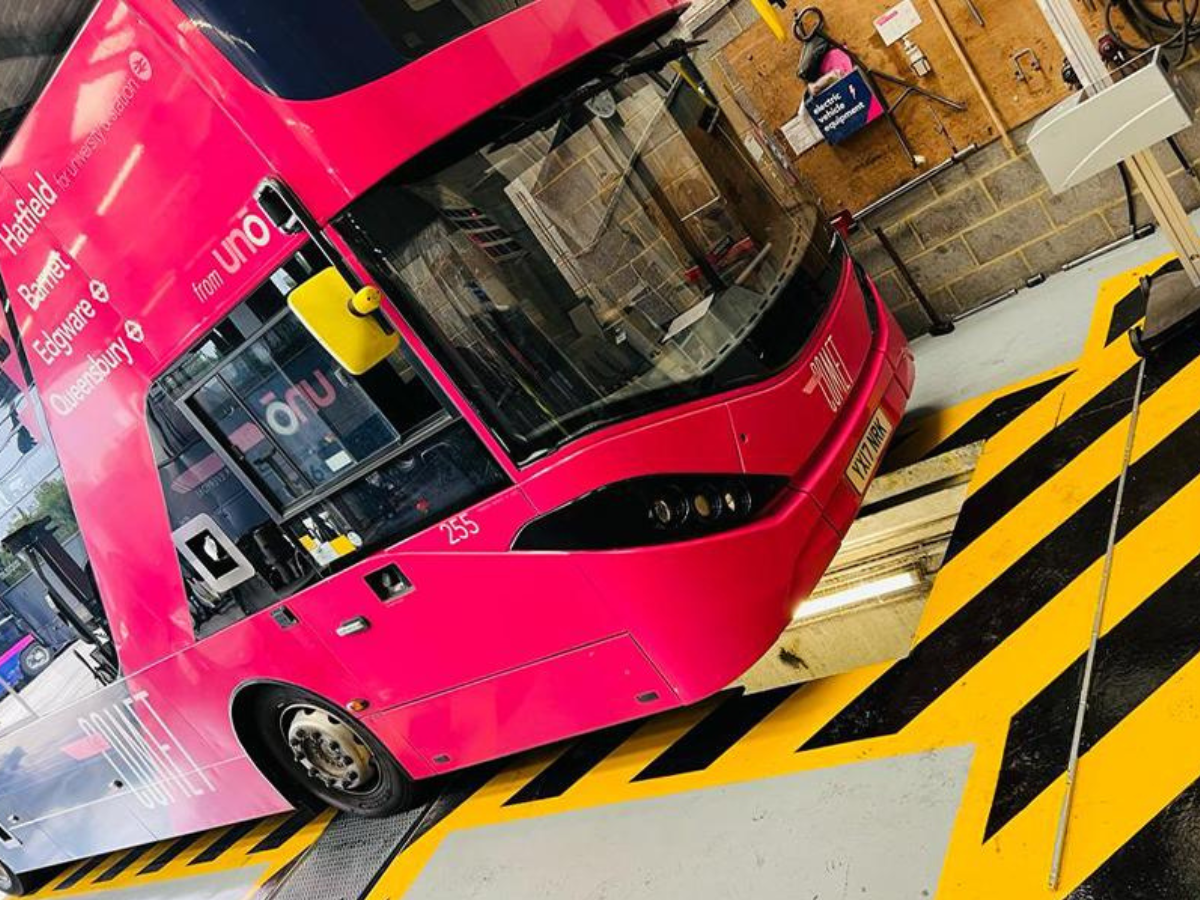An in-ground lift can be a big commitment.
But for busy workshops and growing fleets, it’s also a big opportunity — opening up new types of vehicle servicing and giving their teams higher throughput.

So before you dive into your next big upgrade, you need to know the facts — so you can be sure you’re making the right choice for your business.
Here’s what you need to know about how an in-ground vehicle lift works:
How Does It Lift?
Just like a mobile column lift, an in-ground lift raises vehicles by attaching at the chassis — usually either with a scissor mechanism, or individual hydraulic columns.
Our Totalkare In-ground Lift uses square lifting columns with two independent hydraulic circuits, using the pressure on a liquid inside a cylinder to move a piston upwards.
Because an in-ground lift raises vehicles by attaching to the chassis (as opposed to the wheels), your teams can get almost complete access to the systems and structures underneath your vehicles — including the wheels themselves and the surrounding components.
How Many Columns Do You Need?
The most basic in-ground lifts come with two columns, giving you safe support to lift most of the heavy-duty vehicles you’re likely to see.
Each column has a lifting capacity of 15,000kg — which means a two-column setup lets you lift vehicles up to 30,000kg in weight.
That already covers the majority of commercial vehicles. But for workshops that service the heaviest of vehicles (or workshops with a high throughput), a two-column setup might not be enough.
With an in-ground lift that can be installed with up to 8 columns, you’ll get a total lifting capacity of 120,000kg — as well as a setup that can safely handle the longest HGVs on the market.
So how does that help busy workshops with their throughput?
Because the best in-ground lifts let you configure the columns into separate working groups.
With a larger installation of 4–8 columns, you can group different sets of columns and control them independently — effectively giving you multiple working lifts out of just one installation.
That could mean lifting 2 large vehicles, or 4 small vehicles (or any safe combination in between).
So if you’re running a workshop that sees a wide variety of vehicles coming through its doors, installing a lift with more columns means more capacity, more flexibility — and a higher overall throughput.
How Do You Position Your Vehicles?
A simple in-ground lift works a lot like a vehicle lift that uses platforms or rails:
You drive your vehicle into position, and it attaches at the lifting points.
But an advanced in-ground lift takes things one step further:
As well as positioning your vehicles over the lift, a modern in-ground lift lets you position the lift under the vehicles.
With a wireless remote control, you can move the columns along the track of the installation to the best positions for the vehicles you’re servicing.
That’s especially helpful when you’re using grouped columns to create multiple lifts — helping you to create the right distance between the vehicles you’re lifting, and compensate for any extra length in the different vehicles.
What About Floor Space?
Compared to other types of HGV vehicle lifts, an in-ground lift installation does take up some space on the floor.
But that doesn’t mean you get less floor space to use:
Our own In-ground Lift comes with a built-in roller cover between each of its columns that can safely hold up to 7,000kg of weight.
That makes it a safe platform for all kinds of movement through your workshop — your teams walking, their heavy trolleys and equipment, or even smaller vehicles like forklifts.
And the best part?
The built-in roller cover automatically moves along with the lifting columns as you reposition them — so you’ll never have to worry about dangerous gaps or falling hazards.
Ready to See What Our Lifts Can Do?
We’ve been supplying some of the top UK workshops for over 40 years — with a wide range of vehicle lifts for every type of fleet.
So if you’re looking for an upgrade for your next bit of kit, start a chat with one of our vehicle lift experts — or check out the full details of our Totalkare In-ground Lift.
This article was originally published by Totalkare Ltd.


